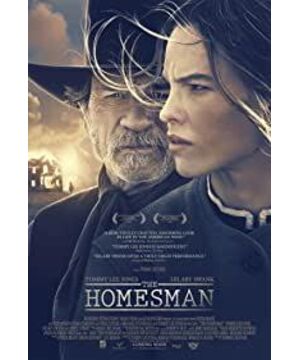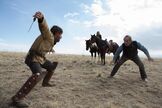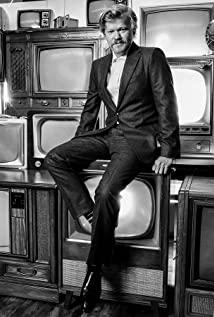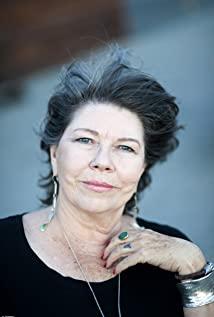Mary Bee Cuddy, in her 30s, lives alone in a small town that has been developed in Nebraska. Being single and unmarried is not a personal religion she deliberately believes in, but she is too girly, and even the savage cowboys who come and go are unwilling to even play with her casually. Occasionally, she showed a gentle and knowledgeable side, such as playing the piano drawn on a piece of woven cloth, singing unpleasant songs, and finally summoning up the courage to propose to the young cowboy, but she was rejected with disgrace. Further west, three frontier women with their own men have accumulated severe mental illness and violent tendencies one by one because they are in the western frontier ravaged by tornadoes and blizzards. Like a bounty killer in a traditional western, Cuddy was given a three-hundred-dollar bank check task to drive a four-wheeled carriage to a pioneering point and send these three poor women to civilized Iowa. A charitable church run by Mrs. Meryl Streep. Soon after he set off, he rescued a street rat that everyone was shouting and beating—George Briggs, an old deserter played by Tommy Lee Jones. A hard journey back and forth for a week.
On the Nebraska prairie, as far as the eye can see, is a skyline that seems to be out of reach. While intensifying the loneliness of the characters in the scene, it also achieves the "minimalism" effect that the director is eager to convey. The film, which took 42 days to shoot, was actually set on two farms in the northeastern part of Las Vegas, New Mexico (not the famous gambling city in Nevada). Due to the dry season during filming, the land with no cattle and sheep grazing was grassed. The seeds grow wildly, and when the wind blows, they look like the Midwest Nebraska, which had not yet been pioneered in the 19th century.
The female half of the sky in the Western is also reflected in the unexpectedly cut-off plot structure. The protagonist Cuddy gets along with three mentally ill women day and night, and she finally reflects the inherent vulnerability of women. She carefully buried the graves of the Indian children, but she lost contact with the carriage driven by old George in the wilderness for a day and a night. When she finally found the camp that burned, it was another marriage proposal and dedication that lost her dignity. It can be regarded as a logical and emotional reserve for the subsequent suicide of Cuddy. Two-thirds of the movie time has passed, and the protagonist of the story has been completely replaced by George, and the genre has changed from "Western Road Movie" to a "psychological construction movie" that vents its nameless fire. If this were another drama film, it would have been criticized as "out of focus and broken", but Tommy Lee Jones has successfully created a relay inheritance relationship.
As if to atone for his sin, the old cowboy he played, after completing the delivery of three dysfunctional women to Iowa, actually proposed to a 16-year-old maid in front of a small hotel. Fortunately, at this age, I don't need much time to maintain my poor dignity. Proposal is more like a drunken joke, such as Cuddy's soul possessed, he boarded the ferry, dropped the horse at will, and sang ugly. Ballads, awkward dance moves. And the tombstone of Cuddy, which was held in his arms very dearly, was completely forgotten in the place where the ferry got in the way, just like its owner's failed female life, and was kicked into the Mississippi River by the crew at random.
View more about The Homesman reviews











